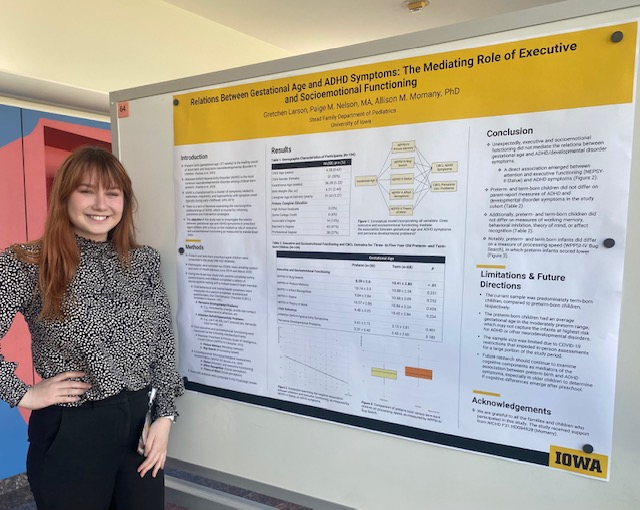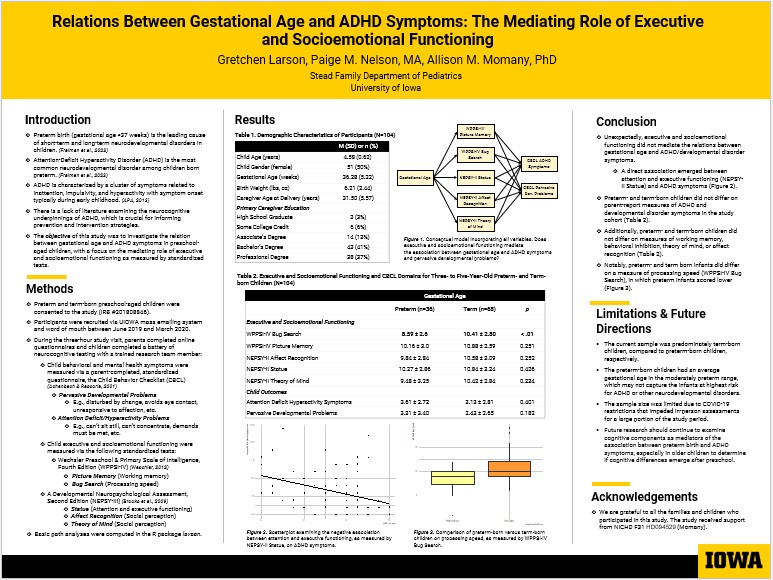

Abstract: Preterm birth (gestational age <37 weeks) is a leading cause of short-term and long-term neurodevelopmental disorders in children. Among neurodevelopmental disorders, Attention-Deficit Hyperactivity Disorder (ADHD) is the most diagnosed among children born preterm. ADHD is characterized by a cluster of symptoms related to inattention, impulsivity, and hyperactivity, and symptom onset is typically during early childhood. Despite robust literature demonstrating a strong association between preterm birth and ADHD diagnosis, the mechanisms accounting for this association are not well understood. Importantly, many studies rely solely on diagnostic interviews or parent reports of ADHD symptoms, but few examine the cognitive underpinnings via standardized testing. Identifying the cognitive factors may shed light on causal mechanisms that account for the association, which can, in turn, influence prevention and intervention strategies. This study aims to investigate the relation between preterm birth and primary caregiver report of ADHD symptoms in preschool-aged children, with a focus on the mediating role of executive and socioemotional functioning as measured by standardized tests. Term and preterm born children who were 3-5 years old and a primary caregiver were recruited to the study. 68 term born children and 36 preterm born children completed an in-person visit that included parent interview, parent questionnaires, and child standardized testing. Primary caregivers provided gestational age at birth and completed the Child Behavior Checklist (CBCL), which includes a subscale for Attention Problems. Components of executive functioning (i.e., working memory, processing speed, inhibition) and socioemotional functioning (i.e., affect recognition) were assessed by the Wechsler Preschool & Primary Scale of Intelligence, Fourth Edition (WPPSI-IV) and Developmental Neuropsychological Assessment, Second Edition (NEPSY-II). Analyses examined the extent to which executive and socioemotional functioning mediated the association between gestational age and Attention Problems, while controlling for parental education. Findings revealed that one of the five subtests, NEPSY-II Statue (β = -0.440, SE = 0.066, P < .001), significantly predicted ADHD symptoms. However, executive and socioemotional functioning did not mediate the relation between gestational age and ADHD symptoms in three- to five-year-old children prior to formal schooling. Future research should continue to examine cognitive components as mediators of the association between preterm birth and ADHD symptoms, and this may be especially fruitful in older children to determine if cognitive differences emerge after preschool.
Click here for a downloadable PDF